Divers from Standing NATO Mine Counter Measures Group 1 (SNMCMG1) continue to find and dispose of historic sea mines in the Baltic Sea.
This action, say NATO, is geared towards making the waters safer for all shipping.
#SNMCMG1 divers are finding and disposing of historic sea mines in the #BalticSea, making the waters safer for all shipping. This is excellent training for the #NATO 🇨🇦🇩🇪🇱🇻🇱🇹🇵🇹 Explosive Ordnance Disposal (EOD) divers #WeAreNATO #StrongerTogether pic.twitter.com/GkTPM2Qn22
— NATO Maritime Command (@NATO_MARCOM) August 20, 2024
The explosives date back to naval mining and coastal operations during World War I and II, but they still pose a danger to the environment as well as present-day shipping. Historic Ordnance Disposal Operations, known as HODOPS, not only make the seas safer, they also provide an important opportunity for specialist mine countermeasures crews to practice finding and destroying modern mines and other ordnance.
SNMCMG1 has participated in several HODOPS throughout the year, identifying and clearing a number of historic mines, torpedoes, missiles, shells, and bombs. Operations have included searches of Swedish waters north of Gotland, the Netherlands’ territorial waters, and, more recently, the seas around France.
A successful operation in the vicinity of Stavanger and Kristiansand detected approximately 300 items of unexploded ordnance, which were identified and documented for future disposal. During Exercises Open Spirit and Exercise Baltops, both in the Irbe-Strait, more than fifty mines were found or successfully destroyed.
Exercise Northern Coasts destroyed ten historical mines that could have posed a danger to shipping. In February, Standing NATO Mine Countermeasures Group Two (SNMCMG2) searched the waters around Croatia and Albania, identifying and classifying unexploded ordnance for future disposal operations.
To carry out this work, mine countermeasure vessels are fitted with specialist equipment, including Hull-Mounted Sonars, Variable Depth Sonars, Autonomous Underwater Vehicles, and Remotely Operated Underwater Vehicles (ROVs).
Sonar is used to search the water and seabed, and an ROV or a diver is sent down to visually confirm that an object is, in fact, ordnance. Acoustic devices scare away marine life from the explosion site before a controlled demolition is carried out. Ordnance can also be lifted out of the sea and destroyed elsewhere if necessary.
The assortment of methods and equipment also gives planners an opportunity to combine and test multiple combinations to ensure the safest and most efficient ordnance approaches.
“Conducting historical ordnance disposal operations is very beneficial for both maritime safety and for Standing Naval Forces like SNMCMG1,” said the Commander of SNMCMG1, Polish Navy Commander Piotr Bartosewicz.
“These remnants of past wars are still posing a real threat and danger to merchant traffic and shipping. As a multinational task group we are united in our purpose to make sea routes safer. Thanks to the commitment of our units, we are able to fulfil that task, while providing good training for our crews.”
SNMCMG1 is one of NATO’s two standing maritime mine countermeasures groups. The multinational naval force can solve a variety of tasks and missions nearly anywhere in the world. The force can be deployed on short notice and is an important contribution to naval operations. The mine countermeasures group regularly removes sea mines from previous conflicts and thereby reducing the risk to maritime activity, as well as contributing to environmental clean-up.
In addition to mine clearance, the force’s main tasks are to patrol the waters of Northern Europe to show NATO presence and monitor ship traffic. This helps the Alliance gain situational awareness of what is going on at sea and in ports in NATO’s areas of interest.
The force is led by the Supreme Allied Commander Europe (SACEUR), based in Mons, Belgium. Day-to-day operations are delegated to NATO’s maritime command in Northwood, UK.


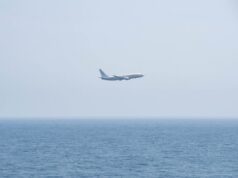
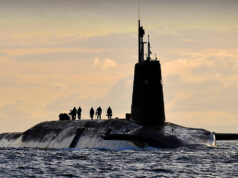

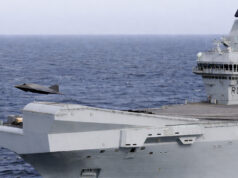
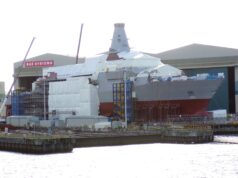
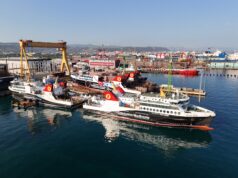

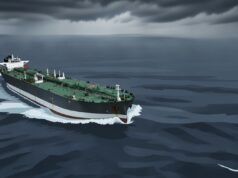

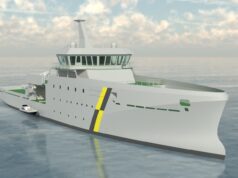

thousands of mines from the world wars as they get older they become more unstable.
Not just the mines, we also have some pretty dangerous wrecks not far off shore. SS Castilian off Anglesey and SS Richard Montgomery off Sheerness to name a couple.
SS Richard Montgomery is regularly surveyed by the MCA.
In 1999, the rigging above the waterline was trimmed to reduce stress levels.
Although the hull is deteriorating, she is considered to be stable.
Also take a look at the SS Mont Blanc explosion in Halifax 1917, not anything to do with mines but still a terrible event involving ammunition ships.
70-80 years clearing up sea mines from the world wars & soon we could get a whole load more depoyed if it all goes belly up again.